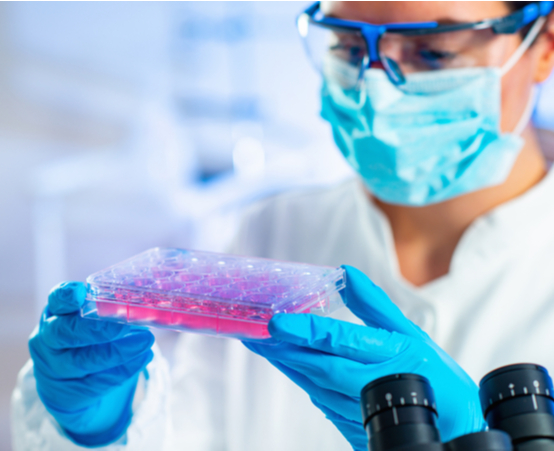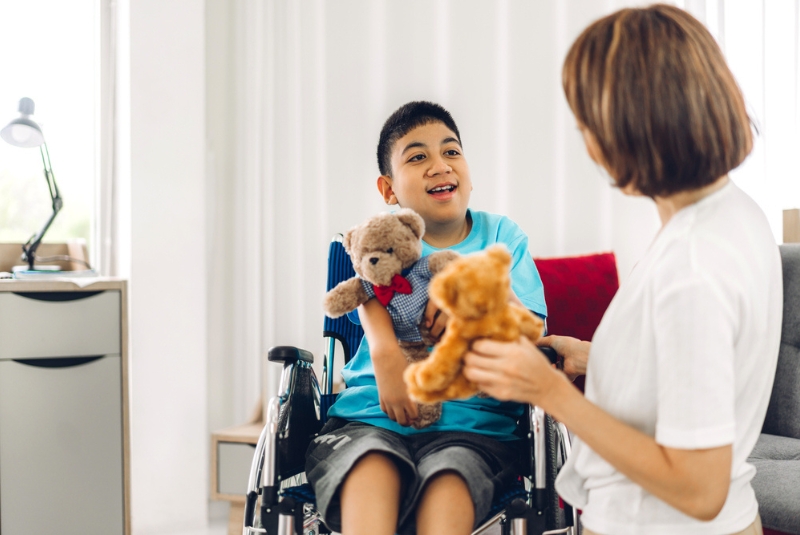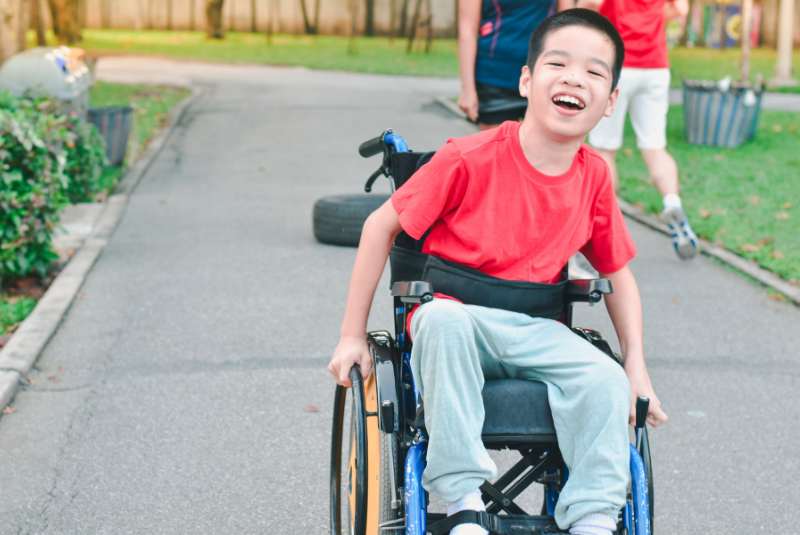Neuromuscular disorders

Neuromuscular disorders are a range of conditions that affect the nerves controlling a child’s muscles.
When a child has a neuromuscular disorder the communication between their nerves and muscles gradually breaks down. This causes their muscles to weaken and waste away.
A child with a neuromuscular disorder might also experience muscle cramps, muscle pain and movement problems. They can also have difficulties with breathing and swallowing.
There are many different types including Charcot-Marie-Tooth disease, muscular dystrophy, spinal muscular atrophy and peripheral neuropathy.
Some disorders might only cause mild muscle weakness. Others can be severe and make it hard to walk, affect vital organs including the heart and lungs and reduce life span and quality of life.
There is currently no cure or way to prevent neuromuscular disorders, but treatments might delay the start of symptoms or reduce their severity.

Who does it affect?
Who does it affect?
- An estimated 41,000 Australians live with one or more neuromuscular conditions.
- Muscle and nerve disorders affect at least one in 1,000 children in Australia.
- There are hundreds of genetic changes (changes in genes) that can cause neuromuscular disorders and there are more to be found.
- Charcot-Marie-Tooth (CMT) disease is the most common childhood inherited nerve disorder and causes limb, hand and foot weakness, foot deformity, pain and difficulty walking.
Our neuromuscular disorder research
Our neuromuscular disorder research
Our researchers are working on patient trials into diagnosis, assessment and treatment of childhood neuromuscular disorders. Areas of focus are Duchenne muscular dystrophy (DMD), spinal muscular atrophy and Charcot-Marie-Tooth disease (CMT).
Our teams collaborate with The Royal Children’s Hospital Neuromuscular clinic and comprise researchers and doctors including neurologists (who specialise in the brain and nerves), physiotherapists and nurses.
Our neuroscience team is involved in international Duchenne muscular dystrophy research including patient trials of potential new treatments such as nutritional supplements, bone medications, gene-based therapy and drugs that bind to genetic material.
We’re enrolling infants with spinal muscular atrophy in an international drug trial and are researching potential new therapies for CMT.
Growing muscle tissue from patients’ cells aims to understand why muscular dystrophies occur and test whether new and existing drugs can stop the disease. Our musculoskeletal group is looking for new muscular dystrophy disease pathways, and evaluating drugs and supplements.
DMD trials at our neuromuscular disorders centre include assessing whether the drug Ataluren can produce a protein important for muscle function; if calf massage can reduce muscle stiffness, shortening and pain; if tests can predict breathing problems in sleep; and surveys to improve quality of care and access.
Impacts of our research

Impacts of our research
- The Centre of Research Excellence in Neuromuscular Disorders is a collaboration of neuromuscular experts. It uses the latest approaches in medicine, science, nursing, and allied health to improve diagnosis, enable prevention, and transform treatment from compassionate management to effective therapy.
- We developed world first guidelines for children with Charcot-Marie-Tooth disease advising on treatment plus monitoring of associated conditions such as hip problems, vision and hearing difficulties.
- We released an app to help doctors prioritise testing for more than 80 genes linked to CMT. It also details research and resources for health professionals and patients.
- We jointly devised guidelines on foot care in CMT to reduce pain, falls and improve walking.
- With The Royal Children's Hospital, we developed a practice brief for doctors and health workers advising on the dietary supplement creatine monohydrate which improves muscle strength in Duchenne Muscular Dystrophy.
- Our exercise programs are making a difference to the everyday lives of young people with neuromuscular disorders. We investigated the best exercise-based therapy programs at neuromuscular disease centres overseas and created a similar program in Melbourne. We hope to roll this out nationwide as exercise is effective for most patients and can slow disease progression in some cases.
Our vision
Our vision
Our goal is healthier and longer lives for children with neuromuscular disorders. We use the latest approaches in medicine, science, nursing and allied health to improve diagnosis, enable prevention and transform treatment from compassionate management to effective therapy for children with these debilitating conditions.
Where to next?
Where to next?
The next step for our research is to develop better models for neuromuscular diseases in the laboratory. To achieve this, we are using patient-specific stem cells to grow skeletal and cardiac muscles as well as nerves in a dish. These models will be used to improve our understanding of the disease and will enable us to test and develop new treatments in the future.






